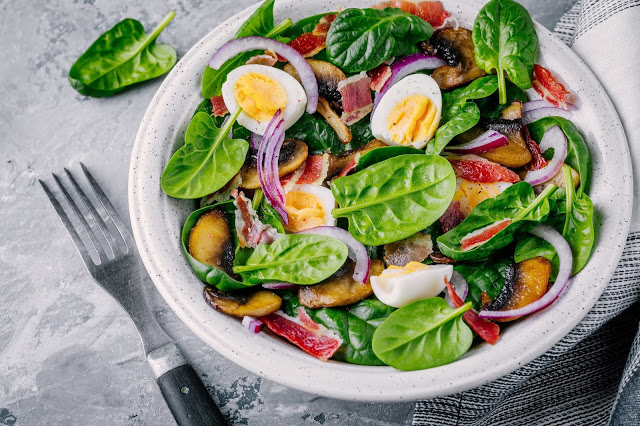What is said about the egg… Myth or reality?

Over time there have been different positions about the benefits or contraindications of egg consumption, but:
What is the reality?
In this article we will talk about some of the studies previously carried out to demystify the relationship of cholesterol from the egg with some diseases, as well as the different nutritional properties it contains.
The nutritional image of the egg has been discussed in the last 50 years due to the development of coronary disease and diabetes due to its cholesterol content, the scientific community until a few decades ago, recommended its occasional consumption because it has a high cholesterol content. This recommendation arose from the publication of a study where it was evidenced that those who had a high consumption of saturated fats would have a higher rate of blood cholesterol therefore increasing the risk of coronary disease.
On the one hand this is true since the excessive or high consumption of saturated fats has a direct relationship with cardiometabolic diseases, but at that time, it was thought that saturated fats were only found in animal products; therefore, they concluded that the consumption of butter, fatty fish, shellfish, and the egg should be prohibited.
Unlike this Antonio Fuertes García (2016), from the cardiology service of the Ramón y Cajal University Hospital in Madrid affirms that:
Practically simultaneously to the publication of the results of this study, which were generally accepted by the medical class of the time, another study was published by Anistchow in which it was concluded that “in humans, the abundant intake of eggs is not accompanied by an increase in the suffering of coronary disease”. (p 41 – 43)
Today we know that saturated fats are not only present in animal foods, but are also present in plant foods and practically in all industrial pastries.
In recent years its leading role as a fundamental food in a balanced diet has returned and with much more force, since several articles and scientific studies have shown that there is no relationship between egg intake and the risk of cardiovascular disease.

Some studies like the one by Nakamura and cols 2006. “which included 90,735 people, no association was found between egg consumption (up to seven eggs a week) with an increased risk of cardiovascular diseases”.
Others like Katz and cols, studied the effect of egg consumption in patients with coronary disease and added risk factors, in which no evidence was found in consumption against a worsening of their pathology.
The Department of Nutritional Sciences at the University of Connecticut conducted a study where it was investigated whether the phospholipids (type of fatty acid) contained in the egg, were capable of blocking the absorption of cholesterol in the intestine, the conclusion of the study revealed that its absorption is indeed decreased, therefore, cholesterol does not pass into the bloodstream.
In other words, egg consumption does not increase blood cholesterol levels.
One of the most important studies that were conducted on egg consumption and the risk of developing cardiovascular disease in men and women, was done by the Department of Public Health at Harvard University in 1999.
They studied for 14 years 117,000 individuals, who were divided into 2 groups, the first group consumed an egg a week while the second group ingested more than one a day.
At the end of the study it was possible to demonstrate the absence of association between egg consumption and cardiovascular risk, finding that there was no difference in the risk of cardiovascular disease between people who consumed an egg a week and those who ingested more than one a day.
Is the recommendation of some doctors and nutritionists to suspend egg consumption in patients diagnosed with Diabetes, Hypertension or Mixed Dyslipidemia justified?
In 2015 the American Society of Nutrition published in its journal a study conducted by The Australian Societyof Diabetes, in which 140 people were studied, who were divided into two groups: one, with an egg-enriched diet (Two daily for six days a week); and the second, with a poor egg diet (less than two a week).
After three months of follow-up, they did not observe significant differences in blood concentrations of triglycerides, LDL – HDL cholesterol, nor in their control glycemia.
In fact, they saw that those who received an egg-rich diet tended to have a slightly higher blood concentration of the so-called “good” HDL-cholesterol.
“This study suggests that an egg-rich diet may be healthy and could be included in the dietary management of patients with type 2 diabetes, due to its richness in micronutrients,” the authors concluded. (Felix, 2017)
Now let’s focus on those people who have high cholesterol, triglycerides or both (mixed dyslipidemia) that require for their treatment to take statins, in order to decrease their blood cholesterol levels.
Is it justified to suspend egg consumption in these cases?

Really in the literature a significant change has not been seen nor has the cardiovascular risk increased in these patients, which is why several studies recommend understanding that the benefits attributed to the nutritional properties of the egg are greater; even so, they always recommend individualizing each case and above all avoid the appearance of cardiometabolic diseases and their complications by performing good primary prevention, which includes a balanced diet, physical activity abandoning toxic habits.
Within a balanced diet, the egg is considered a functional type food, that is, apart from the nutritional contributions it offers, it has been scientifically proven that it provides direct and specific benefits in metabolic requirements or organic functions, playing a preventive role in the development of some diseases.

Characteristics that egg consumption provides:
- Lutein and Zeaxanthin: Carotenoids with important antioxidant, antimutagenic and anticarcinogenic role. They are the main carotenoids in the macular region of the retina, where they can act as protectors of the phototoxic damage of the light that reaches the eye protecting the lipids of the membrane of the cells. They prevent or delay the development of cataracts and macular degeneration.
- EPA, DHA type fatty acids: They contain anti-inflammatory, antioxidant properties at the cellular level, anti-aggregate and vasodilatory properties intervening directly in the prevention of cardiovascular diseases, they also contribute to the development of the brain.
- Choline: Its prenatal importance is given by favoring neuroplasticity in the fetus, it also improves cognitive functions, such as memory and learning in children and adults.
- Selenium: As an antioxidant it helps to protect the membranes of the cells. They increase the absorption of vitamins A, C and E. It improves immune function and is the component of numerous coadjuvant enzymes in the prevention of thrombi.
- Vitamin E: Its antioxidant action is based on neutralizing free radicals and therefore prevents cell damage, it also favors the proper functioning of the immune system.
- Vitamin B12: Necessary for the proper formation of red blood cells, nerve cells, in the metabolism of folic acid and in cell division. Important in cognitive function.
- Biotin: Participates in energy metabolism and amino acids and in the synthesis of fatty acids and glycogen. Necessary for the normal structure and function of the skin of the mucous membranes, hair and nervous system.

Conclusion
The nutritional history of the egg has been full of contradictions, but the new technological and scientific advances in human research, have allowed to discredit the myths that were woven around this food, demonstrating the great nutritional potential it contains.
The cholesterol that the egg has, by itself does not have the capacity to generate cardiometabolicdiseases (coronary disease, hypertension, diabetes, mixed dyslipidemia etc.). In fact, it is a component that is found in each of our cells.
The antioxidant, anti-inflammatory properties, among others, in addition to its participation in the proper cellular functioning and metabolism, allow the egg to be a functional food, providing us with great benefits for our health.
Bibliography:
- DiMarco, D., Norris, G., Millar, C., and Blesso, C. (2017). Intake of up to 3 Eggs per Day Is Associated with Changes in HDL Function and Increased Plasma Antioxidants in Healthy, Young Adults. The Journal of Nutrition, 147(3), 323-329.
- Virtanen, J., Mursu, J., Virtanen, H., Fogelholm, M., Salonen, J., Koskinen, T.,… Tuomainen, T. (2016). Associations of egg and cholesterol intakes with carotid intima-media thickness and risk of incident coronary artery disease according to apolipoprotein E phenotype in men: the Kuopio Ischaemic Heart Disease Risk Factor Study. The American Journal of Clinical Nutrition. 103(3), 895-901. doi: 10.3945/ajcn.115.122317
- Nicklas, T., O’Neil, C., and Fulgoni, V., (2015). Differing Statistical Approaches Affect the Relation between Egg Consumption, Adiposity, and Cardiovascular Risk Factors in Adults. The Journal of Nutrition, 145(1), 170S-176S.
- Virtanen, J., Mursu, J., Tuomainen, T., Virtanen, H., and Voutilainen, S. (2015). Egg consumption and risk of incident type 2 diabetes in men: the Kuopio Ischaemic Heart Disease Risk. The American Journal of Clinical Nutrition. 105(1), 1088–1096. doi: 10.3945/ajcn.114.104109
- Zhao, Y., Wang, C., Wu, J., Wang, Y., Zhu, W., Zhang, Y., and Du, Z. (2013). Choline protects against cardiac hypertrophy induced by increased after-load. International Journal of Biological Sciences, 9(3), 295-302. doi: 10.7150/ijbs.5976.
- Shin, J., Xun, P., Nakamura, Y., and He, K. (2013). Egg consumption in relation to risk of cardiovascular disease and diabetes: a systematic review and meta-analysis. The American Journal of Clinical Nutrition, 98(1), 146-159. doi: 10.3945/ajcn.112.051318.
- Hernández, H., and Rios, M. (2009). Biological role of selenium in humans. Revista Química Viva. 8(2).
- Condony R. Lesions on the egg: Composition and nutritional value of the egg. University of Barcelona, journal institute of egg studies 2004.
- Sang, K., and Koo, S. (2003). Egg Sphingomyelin Lowers the Lymphatic Absorption of Cholesterol and α-Tocopherol in Rats. The Journal of Nutrition, 133(11), 3571-3576. doi: 10.1093/jn/133.11.3571
- McNamara, DJ. (2002). The impact of egg limitations on coronary heart disease risk: do the numbers add up?. Journal of the American College of Nutrition, 19(5 Suppl), 540S-548S.
- Meister, K., (2002), The Role of Eggs in the Diet: Update. New York, United States, Special Report. American Council on Science and Health.
- McNamara, DJ. (2000). The impact of egg limitations on coronary heart disease risk: do the numbers add up?. Journal of the American College of Nutrition, 19(5 Suppl), 540S-548S.






